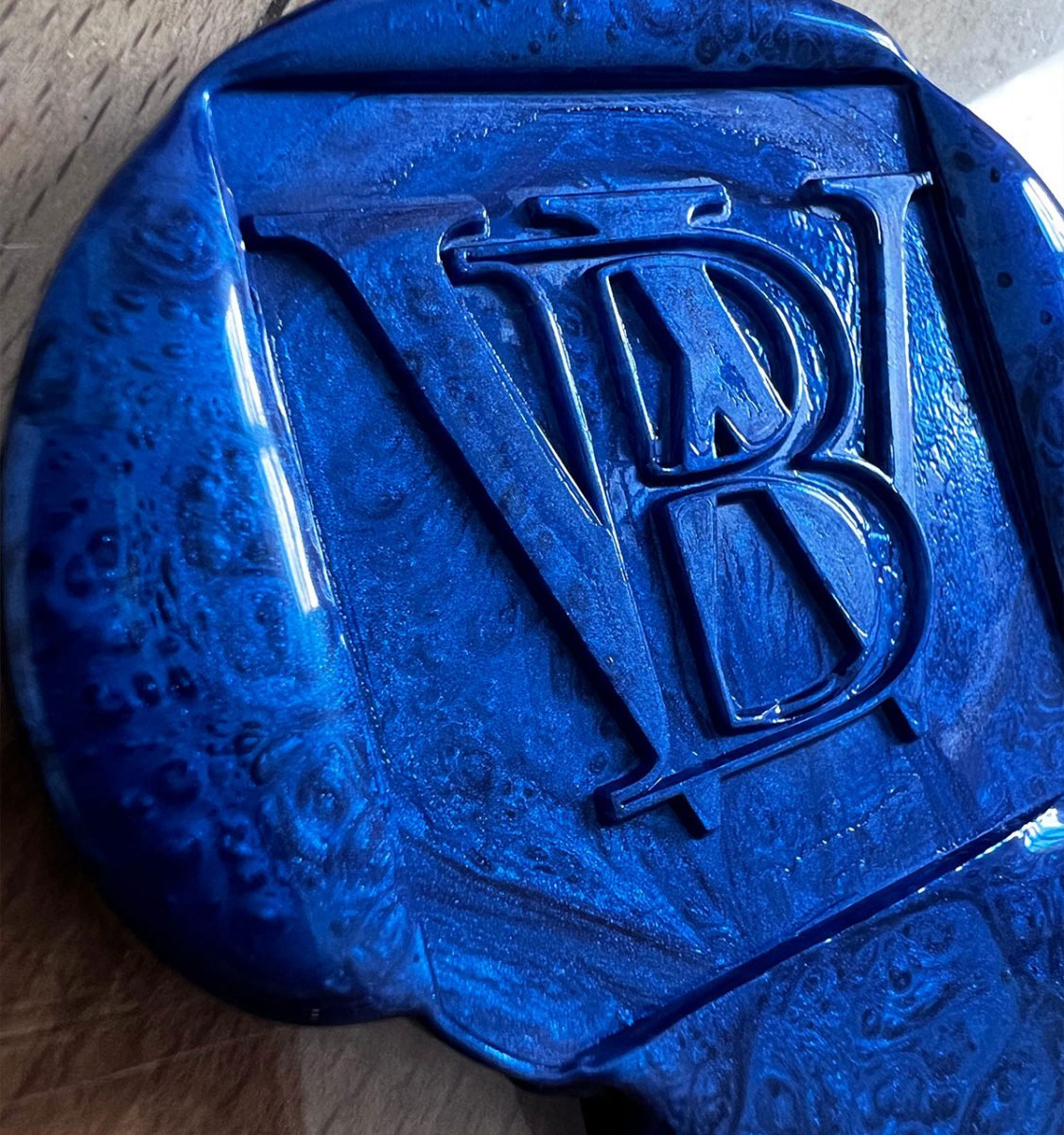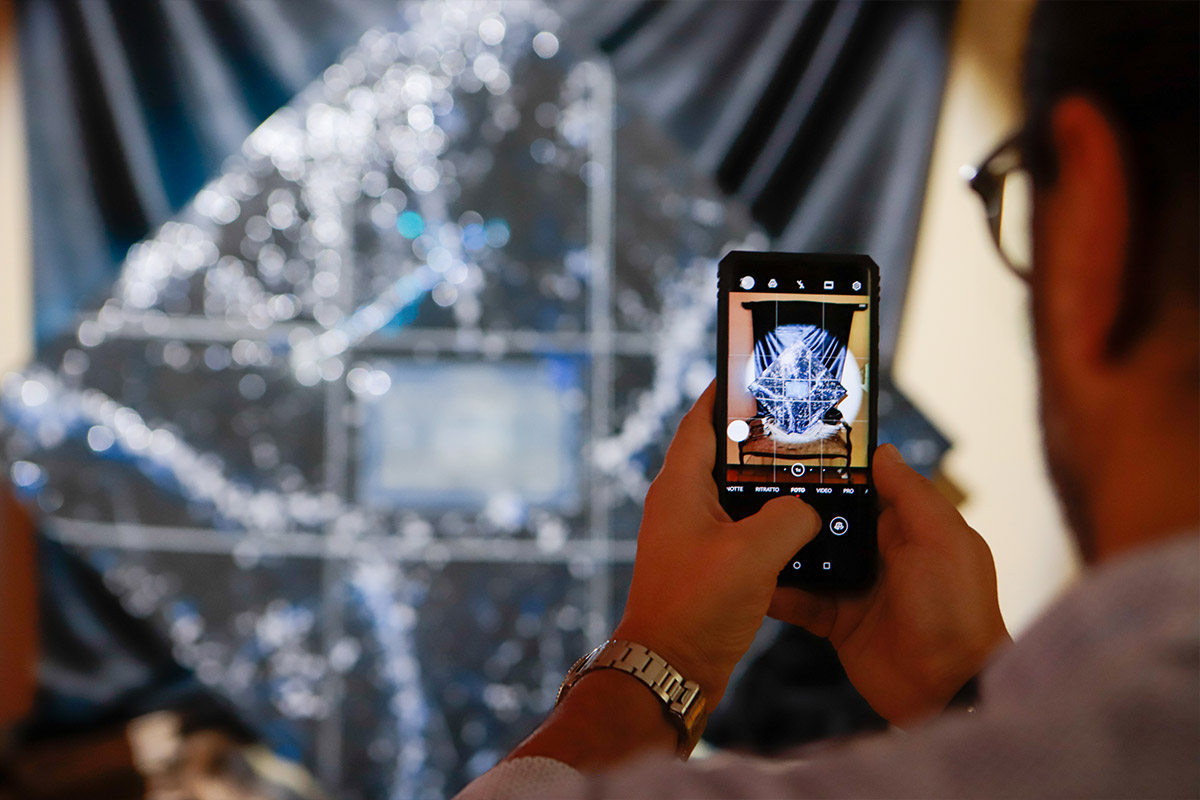Origins and philosophy
“There are more things in heaven and earth, Horatio, than are dreamt of in your philosophy.” (There are more things in heaven and earth, Horatio,/than are dreamt of in your philosophy).
In 1966, Billy Kluever and Rauschenberg officially launched the project, “Experiments n Art and Technology”(E.A.T.), a non-profit organization created to promote collaborations between artists and engineers.
It seems clear that the Whiteblood Foundation draws inspiration from Rauschenberg’s project to combine conceptual and figurative art experiences through representative and significant materials of the contemporary historical moment by creating creative algorithms with high cognitive and artistic density.
The art collective intends to investigate and represent the theme of “fragile reality,” fragile as Latin teaches it with the expression “frangere”: to break, to shatter.
Something is said to be fragile when this something structurally has the characteristic of breaking, a condition that fatally involves every living thing, such as man and, as WB states, art itself.
Artwork is to be considered alive (and never eternal) for this collective of artists. Art according to the collective, is mostly reduced to its mere function as a commodity of production, an object of entertainment and commercial exchange, thus squeezed and kept alive unchanged and unchanging, through laws, codes that annihilate the very essence of art that by now languishes zombified in its multiple and endless reiterations and representations even digital.

The concept of frangar non flectar (I will break, but I will not bend) is indeed strongly indicative of a condition that is not adequate to absorb the complex mechanisms of interaction and interference, typical of identity not only artistic.
The collective intends to exalt and highlight that fragility that is combined with the capacity for emotion, with sensitive perceptiveness, with the flexibility that allows one to maintain the balances between the various components typical of the individual and of man today increasingly measured, weighed and valued as a commodity, as a product, as exercising a mere technical function in a complex alienating mechanism.
Lability is a concept that is linked to fragility; in reality it is the principle of flectar non frangar, that is, of flexibility, elasticity, plasticity that generates adaptability and thus “readiness” for change.
This is a countertrend investigation, a kind of oneiricism where creative activity is expressed in conditions of obscuring consciousness and rationality and the primal instinct to survival and immortality, in a world where concepts such as fragility, transience and death are instead obnubilated through false representations and endless reassuring reiterations, conveyed in instruments of entertainment and escape from the necessary collective awareness.
Instead, the artistic intent of the group is precisely to break up the simulacra and pursue reality. The great Bard already sensed this: ” There are more things in heaven and earth, Horatio, Than are dreamt of in your philosophy. (There are more things in heaven and earth, Horatio,/ Than are dreamt of in your philosophy).
Recycled carbon is a product of WB called Live Carbon, a kind of living, textural plasma with which to bring the Artwork to life. Fiction, the fantastic, the fake, become, therefore, mere subgroups of a complex and incomprehensible reality that does not allow escapes into entertainment and consumption.
And WB is not looking for swinging consumers and buyers but for minds, men, people and thoughts that yearn for a return to the real, that believe in the work of the collective, that become custodians who believe in a material experience capable of realigning the artistic goal to an essential component of the real. Artistic value is measured, then, in the power of mutation of the real: the more the real changes, the more powerful and therefore authentic and essential the Artistic Work is.
The observer, the principal, and the Copenhagen interpretation.
The ‘reality’ of the world of quantum physics according to the Copenhagen interpretation. According to the Copenhagen interpretation, the world is ‘an undefined quantum cloud’ pervaded by probability waves or wave functions. Every so often one of these waves ‘collapses,’ and then, and only then, does ‘something’ happen: a fragment of reality appears and the related physical quantities take on values that are measurable for us. The sequence of those ‘somethings’ constitutes the reality we perceive.
Copenhagen’s interpretation takes the philosophical doctrine of science known as ‘positivism’ to extremes. According to the philosophical current of positivism, the only authentic knowledge is that which is based on direct observation, experience and positive verification. Scientific knowledge, in particular, is only that which is verifiable, that is, proven by empirical methods and not by argumentation. Scientific research can use deductive logic only if it serves to develop theories that can later be tested experimentally.
Werner Heisenberg says that the results of measurements are the only reality, and that there is no point in talking about what the electron looks like, where it is and what it is doing between measurements. Being an abstraction, according to Heisenberg and the Copenhagen interpretation, it is not even worth investigating the deeper nature of an electron to try to understand ‘why’ it behaves in such a strange way, it is enough to know ‘how’ it behaves by noting the results of experiments. So it is real what we experience, everything else is abstractions with no value whatsoever to human knowledge.

The wb artist collective makes works only on commission. It believes that the commissioner plays the role of an observer of the artistic work of the group, which until the moment the order is generated works, experiments, realizes in a cosmos of infinite probabilities and variations that collapse only at the moment the work is made for the commissioner.
Therefore, wb’s Visible Works are not for sale. The visible works of wb are expressions of potential creative inspiration that is expressed only and only at the moment of commission, and only at that moment does the potential work collapse into artistic work.